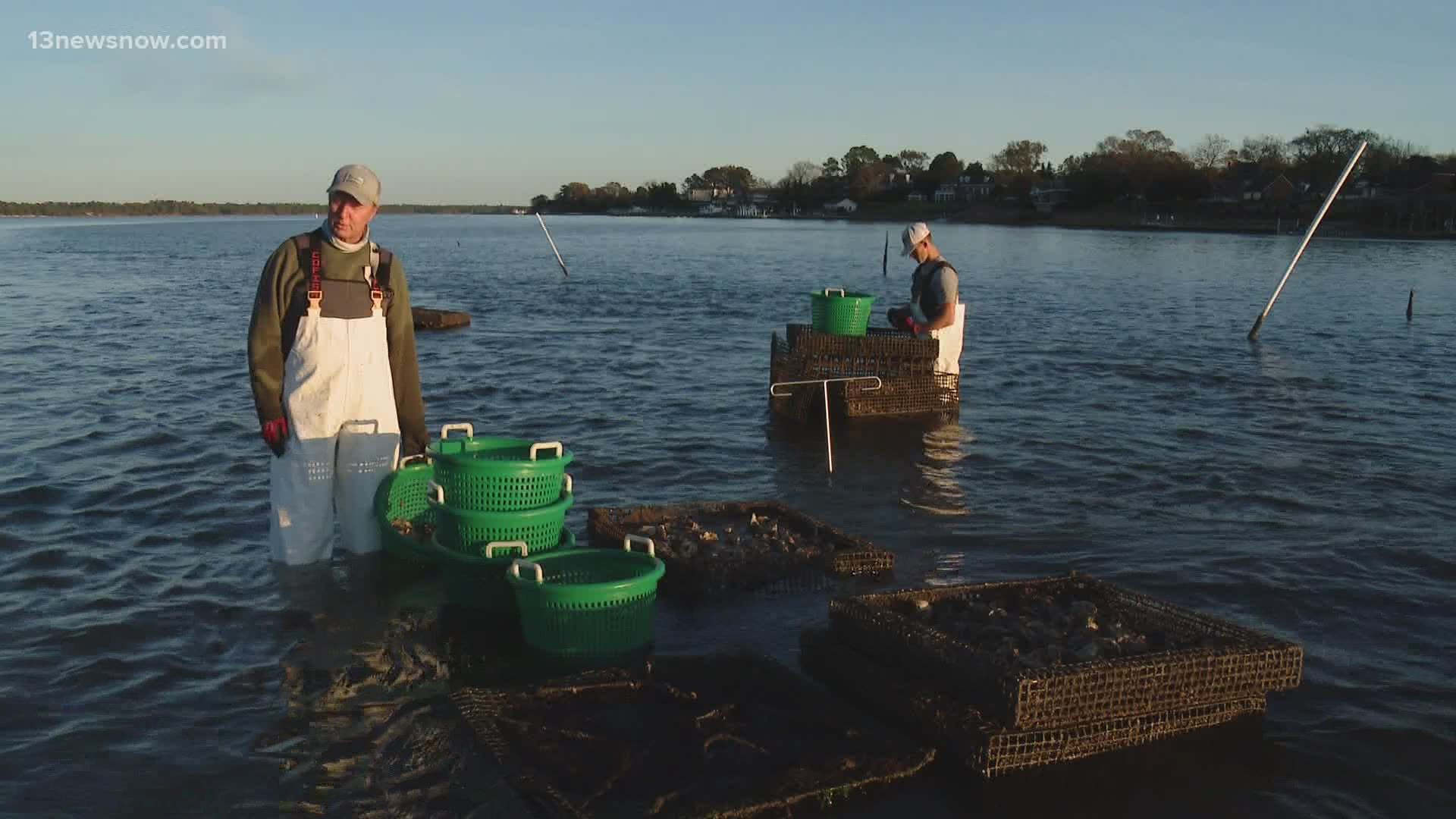VIRGINIA BEACH, Va. — Author's Note: The above video is on file from November 20, 2020.
The Chesapeake Bay Foundation's Virginia Oyster Team, which was made up of 468 gardeners, finished their restoration season today and set a record high number for repopulation in local waterways.
“This has been a really gratifying season. As they grow, these oyster reefs will filter and clean the water and create habitat for crabs, shrimp, and game fish such as striped bass, red drum, and speckled trout,” said CBF Virginia Oyster Restoration Manager Jackie Shannon.
“So many people came together to make this happen, from dedicated oyster restoration volunteers, to our many state, federal and local partners, to the hundreds of oyster gardeners across Tidewater Virginia," Shannon added.
The barges, which are located at the Chesapeake Bay Foundation's Brock Environmental Center in Virginia Beach and hold six 850-gallon tanks full of circulating river water, allowed for the growth of about 3.5 million oysters.
The final number was approximately 780,000 higher than expected after the foundation set a new record high "spat set," which means the number of oyster larvae that attach to empty shells to grow and mature.
While the number of larvae that successfully attach is usually only around 10%, this year's rate was 13%.
The process of raising oysters takes time and attention: Over the course of a year, gardeners grow oysters in cages that hang off of docks and then they are brought to the Chesapeake Bay Foundation, which then places them in reefs that are protected from harvesting.
This year, gardeners returned nearly 100,000 mature oysters, which were then placed in the Lynnhaven River, Lafayette River, Warehouse Creek, Hampton River, Nansemond River, Elizabeth River and Rappahannock River.
These conservation and repopulation efforts all fall in line with the Chesapeake Oyster Alliance, which has a goal of adding 10 billion new oysters to the Chesapeake Bay by 2025.

